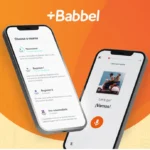How Augmented Intelligence Is Reshaping The Future Of Work
Have you ever felt like you’re spinning plates when trying to keep up with the relentless pace of technology? The digital age has been a whirlwind of progress and disruption, but we might be on the cusp of something transformative that can help to counteract this struggle. Augmented intelligence, a trend that uses AI to empower workers rather than replace them, offers an opportunity to streamline some of the frustrations of digital transformation.
The Potential Downsides Of AI In The Workforce
AI is becoming the driving force behind global economic growth and is projected to have a tremendous economic impact, with an added to the global economy by 2030, according to PwC. But with great power comes—job displacement. While we can celebrate how smart machines make our lives easier and more efficient, there’s a darker side: They can take over human jobs.
A recent study by the Hiring Lab for Indeed revealed that almost 20% of jobs “face the highest potential exposure” for job displacement by AI. This phenomenon has wide-reaching implications; everyone from on assembly lines to is feeling or may soon feel its impact.
Harnessing Human Excellence And Creativity
How do we solve the problem of job displacement? “The best way out is always through,” as Robert Frost said. In the face of AI advancements, it’s time to double down on our uniquely human capabilities: imagination, anticipation, emotions and judgment—traits that machines cannot replicate.
AI has proven itself capable of tackling routine tasks within closed management systems but struggles when faced with open-ended problems requiring creativity and adaptability—a realm where . Remember, there is more to work than simply executing tasks; there’s also vision-setting, team-building and innovation-driving.
As we look ahead to the job market, it’s essential to acknowledge that human beings and AI have special abilities that set them apart. Let’s unpack this.
AI is an extraordinary tool for performing routine tasks. It can analyze massive amounts of data faster than any human could, making decisions based on set parameters with astonishing speed and accuracy. But despite these impressive abilities, there are areas where AI still falls short compared to its human counterparts.
We must understand that AI thrives in environments with —what we call “closed systems.” In contrast, humans often have a hard time maintaining consistent performance in such monotonous scenarios over long periods. This is precisely why many businesses today leverage AI for these lower-level routine tasks—allowing their employees to focus more on complex responsibilities that require creativity or judgment calls—elements uniquely human.
This brings us to our next point: the realms where humans excel far beyond current AIs’ reach—open systems requiring . Consider a scenario where you’re tasked to create an advertising campaign. This process isn’t just about stringing together words or visuals; it involves understanding the brand, the audience’s desires and emotions and how these elements can be connected in a meaningful way—tasks that demand human intuition.
The Power Of Augmented Intelligence (AI3)
When you think about the future of work, imagine a scenario where AI and human intelligence are not competing forces but collaborative partners. This new form of collaboration promises efficiency, accuracy, creativity and proactive action like never before. But it begs the question: How can machines and humans effectively team up?
A well-coordinated partnership between humans and machines doesn’t just happen; it needs carefully designed systems for optimal performance. In other words, effective processes allow us to use AI as a tool that enhances human capabilities rather than replacing them. They enable us to delegate routine work to machines so we can focus more on strategic decision-making and creative problem-solving—a combination leading toward the realization of augmented intelligence, which is sometimes referred to as AI3.
Augmented intelligence is no longer a mere concept; it’s swiftly becoming the normal operating procedure. But how do we get there? How do we ensure that this integration is seamless? A successful future workforce doesn’t pit man against machines but combines their powers.
Think about it like Batman teaming up with his computer system “Batcomputer.” While Batcomputer handles massive data analysis swiftly, Batman uses those insights creatively and intuitively in crime-fighting. This blend allows us more efficient work while also being creative and proactive—making sure neither human potential nor technological advancements go underutilized.
Conclusion
Augmented intelligence isn’t just a buzzword. It’s reshaping economies, giving us tools to outsmart problems and innovate like never before. Humans are not being replaced by machines; we’re joining forces with them, creating a dynamic duo where our human spark meets machine efficiency.
The magic happens when we harness this power effectively—navigating job-displacement issues, embracing our unique abilities over AI and building successful collaboration processes. To succeed, think of today’s iteration of AI less as an era of technology and more as an era of amplified humanity. Because ready or not, here comes the future. is an invitation-only community for world-class CIOs, CTOs and technology executives.
Source: forbes








No Comments